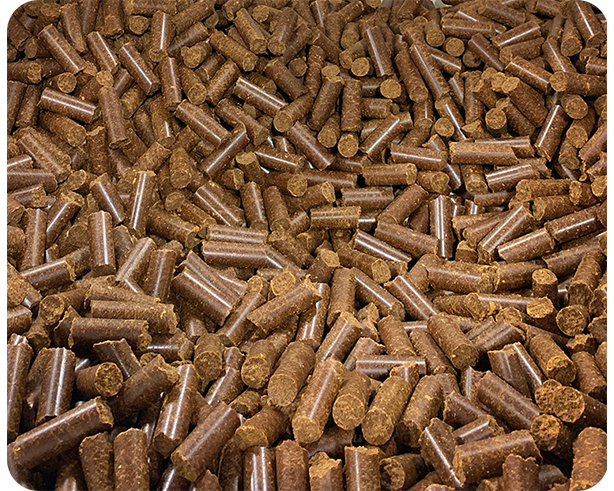In the few hours a week that he isn’t overseeing operations at the yard, Buffalo Feeders general manager Tom Fanning is meticulously managing his own stocker cattle operation at home. Leaning on know-how garnered from 22 years of experience in the feedyard, Fanning has developed a system to consistently produce high-performing cattle from pasture to the rail. MasterHand Milling’s 100% dried distillers grain (DDG) range cubes are a key component of that growing program.
Unlocking the Full Value of Summer Grass
Growing cattle in Northwest, Oklahoma where rainfall is scarce and forage quality often leaves something to be desired, Fanning says the DDG cubes are essential. “They just need a little bit more to really get the full value of what you’re growing out there,” Fanning explains. The extra nutrition from just two to three pounds of DDG cubes adds significant value and prepares cattle to transition to the feedyard, he said.

Growing Frame Over Fat
When asked about a common theory that feeding cattle before the finishing can diminish feedlot performance, Fanning noted the DDG cubes help grow the cattle’s frame without adding unnecessary fat. The cubes provide the necessary nutrients for cattle to build a strong foundation while on grass, resulting in ribeye development during grazing and fat deposition in the feed yard, he said.
“The difference is, did you make that animal fat, or did you grow frame? We’re growing frame with this product,” Fanning explained. “We’re raising that nutritional plane and giving an animal the opportunity to grade choice.”
Fanning continued to explain, saying DDG cubes provide the energy and protein to start pushing cattle while on grass, without the high starch content that creates excess fat too quickly.
“It’s a better product coming back into the feed yard for the final feeding phase with the grass and the pellet combination,” he said.

Smooth Transition to the Feedyard
According to Fanning, the hardest part of finishing a steer is moving him from a cellulose-based (grass) diet to a starch-based (corn) diet. Poor management of that transition often results in digestive upset, overload, and acidosis.
“If you’ve got some pre-work done on the grass, that process is a little smoother,” he explains. “When they come in, they start easy, they transition well, the stress is lower, and that animal is super efficient, and continues to be efficient,” Fanning noted regarding the transition facilitated by the DDG cubes.
Value-Added Benefits for Buyers
When it comes to buying cattle, Fanning said animals that are healthy and ready for transition are of premium value. When asked what producers can do to add value to their calves on sale day, Fanning said to focus on health.
“Have those animals healthy and ready to do that transition and go on feed,” Fanning advised. “We like those cattle that have been turned on grass and eating these cubes. Their health profile is set, and their nutritional plane is up.”
Fanning also said history is a major factor in prices producers can expect to get for their calves, and why the market has tended to pay more for cattle fed with DDG cubes.
“Those buyers are keeping track of what cattle do what and where they go,” Fanning said. “If you have the history of what those animals are and you know that this is the program, they’re on, those are the cattle at the top of the list when you’re ready to buy.”
Learn More About Tom Fanning & Buffalo Feeders
Tom Fanning has been the General Manager at Buffalo Feeders for 22 years, leading a team where half of the members have been with the company for 15 to 20 years or more. “We have a lot of very good, well-trained, long-term employees who are committed to doing a good job for our customers. I think that’s what makes a huge difference,” Fanning proudly states.
Buffalo Feeders, established in the early 60s, is part of the Pratt Feeder group with feed yards in various locations including Buffalo, Oklahoma as well as Ashland, Pratt, and Ford County, Kansas. The feed yard is primarily a custom feed yard, with 70-80% of the cattle being customer-owned from across the United States. With a detail-oriented approach and a commitment to excellence, Buffalo Feeders ensures individualized care for each animal, from weighing and ID tagging to sorting and marketing.
Buffalo Feeders is strategically located on the eastern edge of the High Plains cattle feeding area, serving as a significant pass-through for cattle heading to packing plants. With its proximity to major packing plants in western Kansas — Buffalo Feeders is in a prime position. The company engages in weekly sales of cattle to Cargill, National Beef and Tyson, among others, with most transactions conducted through a grid-based formula program, negotiated grids, and a portion in cash sales. This strategic location and well-established sales approach underline Buffalo Feeders’ significance and success in the industry.


